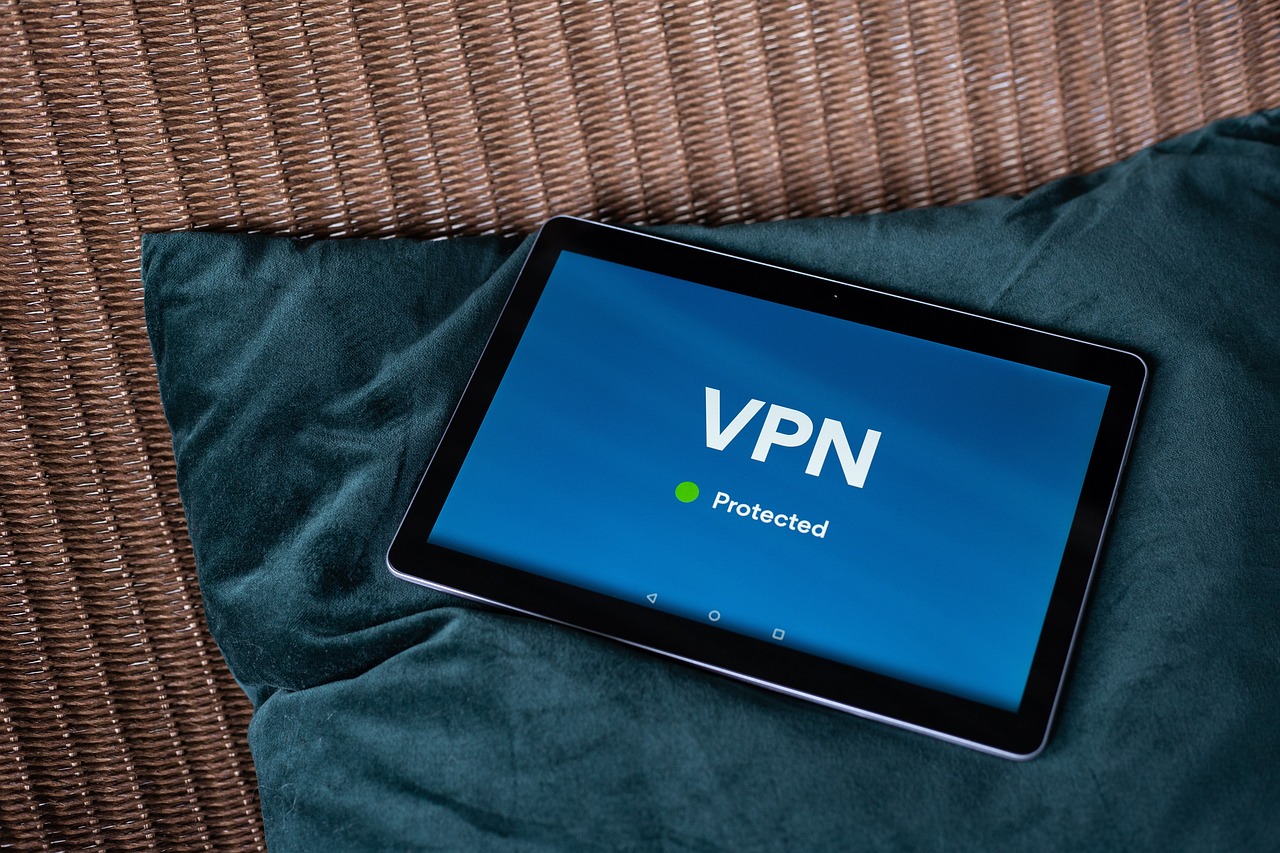How to Build a Secure Online Business
In today's digital age, building a secure online business is not just a luxury; it's a necessity. With cyber threats lurking around every corner, having robust security measures in place can mean the difference between thriving and merely surviving. Think of your online business as a fortress. Just like a castle needs strong walls, a moat, and vigilant guards, your online presence requires a comprehensive security strategy to protect it from intruders. In this article, we will explore essential strategies and best practices that will help you fortify your business against potential threats, ensuring that both your assets and your customers' information remain safe.
Cybersecurity is the backbone of any online business. It involves protecting your systems, networks, and data from digital attacks. To grasp the importance of cybersecurity, you need to familiarize yourself with some fundamental concepts:
- Threats: These are potential dangers that could exploit vulnerabilities in your system, such as malware, phishing attacks, or ransomware.
- Vulnerabilities: These are weaknesses in your system that can be exploited by threats. They can arise from outdated software, weak passwords, or untrained employees.
- Protective Measures: These are strategies and tools employed to safeguard your business, including firewalls, antivirus software, and employee training.
By understanding these basics, you can start to build a strong foundation for your online business's security.
One of the simplest yet most effective ways to secure your online business is by implementing strong password policies. Think of passwords as the keys to your digital kingdom. If they are weak or easily guessed, it’s like leaving the castle gates wide open. Here are some best practices for creating and managing passwords:
- Use a mix of letters, numbers, and special characters.
- Avoid using easily accessible personal information, like birthdays or names.
- Encourage regular password changes and discourage password reuse.
Remember, the stronger the password, the harder it is for unauthorized individuals to gain access.
Multi-factor authentication (MFA) is like having an extra lock on your door. It requires users to provide two or more verification factors to gain access to a resource, such as a website or an application. This additional layer of security is crucial in today’s environment where data breaches are rampant. By implementing MFA, even if someone manages to steal a password, they won’t be able to access your system without the second factor, which could be a code sent to your phone or an authentication app.
When it comes to multi-factor authentication, there are several methods to consider:
| Authentication Method | Level of Security | Pros | Cons |
|---|---|---|---|
| SMS Codes | Moderate | Easy to implement | Can be intercepted |
| Authentication Apps | High | More secure than SMS | Requires app installation |
| Biometric Data | Very High | Highly secure | Can be expensive |
By evaluating these options, you can select the best fit for your business needs.
Your employees are your first line of defense against cyber threats. It’s essential to provide them with training on recognizing potential threats and adhering to security protocols. Regular workshops and training sessions can significantly enhance their ability to identify phishing attempts or suspicious activities. After all, a well-informed team is your best weapon against cybercrime.
Keeping your software updated is crucial for preventing vulnerabilities. Think of it as maintaining your car; if you neglect regular check-ups, you’re more likely to face breakdowns. Regular updates not only fix bugs but also patch security holes that hackers could exploit. Make it a habit to check for updates regularly and automate the process whenever possible to ensure you’re always protected.
Data encryption is like putting your sensitive information in a locked box. It protects customer data from unauthorized access by converting it into a coded format that can only be read with the correct decryption key. There are various encryption methods available, and understanding them can help you secure customer data and transactions effectively.
Selecting appropriate encryption tools is crucial for effective data protection. Popular tools include:
- SSL/TLS for securing data in transit.
- Full disk encryption for protecting data at rest.
- End-to-end encryption for secure messaging and communications.
By reviewing the features of these tools, you can make informed decisions that best suit your business needs.
Compliance with data protection regulations is mandatory for online businesses. Regulations such as the General Data Protection Regulation (GDPR) and the California Consumer Privacy Act (CCPA) set stringent guidelines on how businesses should handle customer data. Understanding these regulations and their implications for your operations is essential for avoiding hefty fines and maintaining customer trust.
A well-defined security policy serves as a roadmap for your business's approach to cybersecurity. It should outline the security measures in place, employee responsibilities, and protocols for responding to incidents. Essential components to include in your policy are:
- Access controls
- Incident response procedures
- Data protection measures
By having a comprehensive security policy, you can ensure that everyone in your organization understands their role in maintaining security.
Regular security audits help identify vulnerabilities in your systems before they can be exploited. Think of it as a health check-up for your business. By conducting audits, you can evaluate the effectiveness of your security measures and implement necessary improvements to enhance your security posture.
Having a response plan is critical in the event of a security breach. This plan should outline steps to take immediately after a breach is detected, such as notifying affected customers, assessing the damage, and implementing fixes. Being prepared can minimize damage and help you recover swiftly, ensuring that your business can bounce back stronger than before.
Q: What is the most important aspect of online business security?
A: While all aspects of security are important, having strong password policies and implementing multi-factor authentication are crucial first steps in protecting your online business.
Q: How often should I update my software?
A: It’s best to check for updates regularly, ideally on a weekly basis, and to automate updates whenever possible to ensure you’re always protected.
Q: What should I do if I suspect a data breach?
A: Immediately follow your incident response plan, which should include notifying affected parties and assessing the extent of the breach.

Understanding Cybersecurity Basics
In today's digital world, cybersecurity is not just a buzzword; it’s a necessity for any online business. Imagine your business as a fortress, and cybersecurity as the walls that protect it from intruders. Without these protective measures, your sensitive information, customer data, and even your business reputation could be at risk. So, what exactly does cybersecurity encompass? At its core, it involves understanding various threats, identifying vulnerabilities, and implementing effective protective measures.
To start, let’s break down some common threats that online businesses face:
- Malware: Malicious software designed to harm or exploit any programmable device or network.
- Phishing: Deceptive attempts to obtain sensitive information by masquerading as a trustworthy entity.
- DDoS Attacks: Distributed denial-of-service attacks that overwhelm your server with traffic, causing it to crash.
Understanding these threats is just the beginning. Next, you need to assess your business for potential vulnerabilities. Vulnerabilities are weaknesses in your system that can be exploited by attackers. These may include outdated software, weak passwords, or even inadequate employee training. By identifying these weak points, you can take steps to fortify your defenses.
Now, let’s talk about protective measures. Implementing strong cybersecurity practices is akin to installing locks on your doors and windows. Some fundamental measures include:
- Regular software updates to patch security flaws.
- Using firewalls to monitor incoming and outgoing traffic.
- Educating employees about the importance of security protocols.
In addition to these measures, it's essential to stay informed about the latest cybersecurity trends and threats. The digital landscape is constantly evolving, and new threats emerge regularly. By keeping yourself updated, you can adapt your strategies and ensure that your business remains secure.
In conclusion, understanding the basics of cybersecurity is crucial for protecting your online business. By being aware of the threats, identifying vulnerabilities, and implementing robust protective measures, you can create a secure environment for your digital assets and customer information. Remember, in the world of cybersecurity, an ounce of prevention is truly worth a pound of cure!
- What is the most common cybersecurity threat?
The most common threats include malware and phishing attacks, which target both businesses and individuals.
- How often should I update my software?
It's recommended to update your software regularly, ideally as soon as updates are available, to protect against vulnerabilities.
- What is a strong password?
A strong password typically includes a mix of uppercase letters, lowercase letters, numbers, and symbols, and should be at least 12 characters long.

Implementing Strong Password Policies
In the digital world, your password is your first line of defense. Think of it as the key to your front door; if it's weak, you're inviting trouble right in. Implementing strong password policies is not just a recommendation; it's a necessity for any online business looking to protect itself from unauthorized access and potential data breaches. So, what makes a password strong? It’s all about complexity, length, and unpredictability. A strong password typically combines uppercase and lowercase letters, numbers, and special characters. For instance, instead of using something simple like "password123," a stronger alternative could be "P@ssw0rd!2023." This not only makes it harder for hackers to guess but also adds layers of security.
Moreover, it’s crucial to establish a policy that encourages employees and users to change their passwords regularly. Consider implementing a mandatory password change every 90 days. This practice can significantly reduce the risk of unauthorized access, especially if a password has been compromised without the user's knowledge. To track compliance, you can use a password management tool that reminds users when it's time to update their passwords. These tools can also generate strong passwords automatically, taking the guesswork out of creating them.
Another essential aspect of a strong password policy is the prohibition of password sharing. Sharing passwords is like giving multiple people a key to your house; it increases the risk of someone misusing that access. Instead, encourage team members to use individual accounts with unique passwords. This way, if one account is compromised, the damage is contained, and you can quickly respond by changing that specific password without affecting others.
To further enhance security, consider implementing a password history policy that prevents users from reusing their last several passwords. This approach ensures that even if a password is leaked, it cannot be reused immediately, providing an additional layer of protection. You might also want to educate your employees about common phishing tactics that could lead to password theft. This education can be as simple as sending out informative emails or hosting a workshop on recognizing suspicious activity.
In conclusion, a robust password policy is a critical component of your overall cybersecurity strategy. By prioritizing password strength, enforcing regular updates, and educating your team, you can significantly reduce the risk of unauthorized access and protect your online business from potential threats. Remember, in the world of cybersecurity, your password is your first line of defense—make it count!
- What constitutes a strong password? A strong password should be at least 12 characters long, include a mix of uppercase and lowercase letters, numbers, and special characters.
- How often should I change my password? It is advisable to change your password every 90 days to minimize the risk of unauthorized access.
- Can I use a password manager? Yes! Password managers can help you generate and store complex passwords securely, making it easier to maintain strong password practices.
- Is it safe to share passwords with colleagues? No, sharing passwords increases the risk of unauthorized access. Each user should have their own unique login credentials.

Utilizing Multi-Factor Authentication
In today's digital age, securing your online business is more critical than ever, and one of the most effective ways to bolster your defenses is by utilizing multi-factor authentication (MFA). Think of MFA as a robust lock on your front door, one that requires not just a key but also a secret code or even a fingerprint. This layered approach to security makes it significantly harder for unauthorized users to gain access to sensitive information, even if they manage to acquire your password.
So, what exactly is multi-factor authentication? Simply put, it’s a security mechanism that requires two or more verification factors to gain access to an account or system. The factors can be categorized into three main types: something you know (like a password), something you have (like a smartphone), and something you are (like a fingerprint). By combining these factors, you create a more formidable barrier against potential intruders.
The importance of implementing MFA cannot be overstated. Cybercriminals are constantly evolving their tactics, and relying solely on a password is akin to leaving your door wide open. According to recent studies, accounts protected by MFA are significantly less likely to be compromised. In fact, it's estimated that MFA can block up to 99.9% of automated attacks! This statistic alone should motivate any online business owner to adopt this security measure.
Implementing MFA in your online business is straightforward, and there are several methods to choose from. Here are a few commonly used authentication methods:
- SMS Codes: A one-time code is sent to the user’s mobile device, which they must enter to gain access.
- Authentication Apps: Apps like Google Authenticator or Authy generate time-sensitive codes that users must input.
- Biometric Data: This includes fingerprint scans or facial recognition, which are becoming increasingly popular due to their convenience and security.
When selecting the right authentication method for your business, consider the balance between security and user experience. While biometric data offers high security, it may not be practical for all users. On the other hand, SMS codes are easy to use but can be intercepted. Therefore, it’s essential to assess your unique business needs and choose an MFA method that aligns with your overall security strategy.
Another vital aspect of utilizing MFA is educating your employees about its importance. A well-informed team can significantly enhance your security posture. Make sure to provide training sessions that explain how MFA works, why it’s necessary, and how to use it effectively. This knowledge not only empowers your employees but also fosters a culture of security within your organization.
In conclusion, multi-factor authentication is an indispensable tool for any online business looking to safeguard its assets and customer information. By implementing MFA, you are not just adding an extra layer of security; you are also sending a clear message to your customers that their data is a top priority. So, don’t wait for a security breach to take action—start utilizing multi-factor authentication today and fortify your digital fortress!

Choosing the Right Authentication Methods
When it comes to securing your online business, is like picking the right lock for your front door. You wouldn't want just any lock, right? You need something robust that keeps unwanted visitors out. In the digital world, authentication methods serve as the gatekeepers of your sensitive information, ensuring that only authorized users can access your systems. But with so many options available, how do you make the best choice?
First, let’s explore the main types of authentication methods available today:
- SMS Codes: This method sends a one-time code to the user's mobile device. While convenient, it can be vulnerable to interception.
- Authentication Apps: Apps like Google Authenticator or Authy generate time-sensitive codes that are more secure than SMS codes, as they don’t rely on cellular networks.
- Biometric Data: This includes fingerprint scanning, facial recognition, or iris scans. It offers a high level of security but requires specialized hardware.
Each of these methods has its own advantages and disadvantages. For instance, SMS codes are easy to implement and user-friendly, but they can be susceptible to SIM swapping attacks. On the other hand, biometric methods provide a strong level of security, but they may not be feasible for all businesses due to the cost of implementation and privacy concerns.
When deciding on the best authentication method for your business, consider the following factors:
- Business Size: Larger organizations may benefit from more sophisticated methods like biometric authentication, while smaller businesses might find SMS codes sufficient.
- User Experience: Choose a method that balances security and ease of use. If it’s too complicated, users may be tempted to bypass it.
- Cost: Evaluate your budget. Some methods, particularly biometric systems, can be expensive to set up and maintain.
Ultimately, the best approach is often a combination of methods. For example, pairing an authentication app with a strong password policy creates a multi-layered defense that significantly enhances security. This concept is known as multi-factor authentication (MFA), and it’s becoming increasingly essential in today’s cybersecurity landscape.
In conclusion, choosing the right authentication methods is a critical decision that can greatly impact the security of your online business. By carefully weighing the options and considering the specific needs of your organization, you can make informed choices that safeguard your digital assets and build trust with your customers.
Q: What is the most secure authentication method?
A: While no method is foolproof, biometric authentication combined with multi-factor authentication is generally considered one of the most secure options.
Q: How can I educate my employees about authentication methods?
A: Regular training sessions and workshops can help employees understand the importance of authentication methods and how to use them effectively.
Q: Is it necessary to use multiple authentication methods?
A: Yes, using multiple methods can significantly enhance security by adding layers of protection against unauthorized access.

Educating Employees on Security Practices
In the ever-evolving world of cybersecurity, one of the most critical yet often overlooked aspects is the education of employees on security practices. Think of your employees as the first line of defense against cyber threats; if they are not well-informed, even the most advanced security systems can falter. It's akin to having a high-tech security system in your home but leaving the front door wide open. So, how do you ensure your team is equipped to combat potential threats?
First and foremost, training sessions should be a regular part of your business culture. These sessions can cover a variety of topics, including recognizing phishing attempts, understanding social engineering tactics, and the importance of data privacy. The goal is to create a security-conscious culture where employees feel empowered to take action when they encounter suspicious activities. For instance, you could set up a monthly workshop that dives deep into recent cyber threats and how to recognize them.
Moreover, it's essential to incorporate real-life scenarios into your training. Role-playing exercises can be particularly effective; they allow employees to practice identifying and responding to security threats in a controlled environment. For example, you might simulate a phishing email and ask employees to identify the red flags. This hands-on approach not only makes the training more engaging but also reinforces the lessons learned.
Another vital component is to keep your team updated on the latest security protocols and tools. As technology advances, so do the tactics used by cybercriminals. Regular updates about new software, tools, or changes in company policy can help employees stay informed. Consider sending out a monthly newsletter that highlights these changes and includes tips for maintaining security in their day-to-day tasks.
Additionally, fostering an open line of communication is crucial. Employees should feel comfortable reporting suspicious activities or asking questions without fear of judgment. Establishing a clear reporting process can ensure that potential threats are addressed promptly. You might even consider creating a security champions program, where selected employees act as go-to resources for their teams, further promoting a collaborative approach to security.
Finally, don't forget to measure the effectiveness of your training programs. Utilize quizzes or surveys to assess employee understanding and retention of security practices. This feedback can guide you in refining your training approach, ensuring that it remains relevant and effective. After all, a well-educated team is your best defense against cyber threats.
- Why is employee education on security practices important?
Employee education is crucial because it empowers staff to recognize and respond to potential threats, significantly reducing the risk of security breaches. - How often should training sessions be held?
Regular training sessions, ideally monthly, help keep security practices fresh in employees' minds and update them on the latest threats. - What should be included in training sessions?
Training should cover topics like phishing recognition, data privacy, and the use of security tools, along with real-life scenarios for practical understanding. - How can I measure the effectiveness of training?
Utilizing quizzes, surveys, and feedback sessions can help gauge employee understanding and retention of security practices.

Regular Software Updates and Patching
In the ever-evolving digital landscape, keeping your software updated is not just a good practice; it’s a necessity. Imagine your online business as a fortress. Would you leave the gates wide open, allowing anyone to waltz in? Of course not! Similarly, outdated software can be a gaping hole in your security defenses, making it easier for cybercriminals to exploit vulnerabilities. Regular updates and patching act as your digital security guards, constantly monitoring and reinforcing your systems against potential threats.
Software updates often include vital security patches that address known vulnerabilities. When you neglect these updates, you’re essentially inviting hackers to take advantage of weaknesses in your system. For instance, a recent study found that over 60% of data breaches were linked to unpatched software vulnerabilities. This statistic should send shivers down the spine of any online entrepreneur. So, how can you ensure that your software remains up-to-date and your business stays secure?
First, it’s crucial to establish a routine for checking and applying updates. This could mean setting aside time each week or month specifically for this purpose. You might think, “I’ll just update when I have time,” but that’s like saying you’ll only lock your doors when you remember. Instead, consider automating updates wherever possible. Many software applications offer automatic update features that can save you time and ensure you never miss an important patch.
Next, keep a detailed inventory of all the software applications your business relies on. This includes everything from your operating system to third-party plugins. A simple spreadsheet can help you track which software needs updates and when they were last applied. Here’s a quick example of what that might look like:
| Software Name | Last Updated | Next Update Due |
|---|---|---|
| Operating System | 2023-09-01 | 2023-12-01 |
| CRM Software | 2023-08-15 | 2023-11-15 |
| Website Plugin | 2023-09-10 | 2023-10-10 |
Moreover, don’t underestimate the importance of testing updates in a controlled environment before rolling them out across your entire system. This step is crucial, especially if you’re using complex software that integrates with other applications. It’s like trying out a new recipe before serving it to guests; you want to ensure everything works seamlessly and doesn’t create unexpected issues.
Lastly, educate your team about the importance of software updates and the role they play in maintaining security. When everyone understands that keeping software updated is a team effort, you create a culture of vigilance and proactive security measures. Encourage your staff to report any unusual behavior or outdated software they notice. After all, your employees are your first line of defense against cyber threats.
In summary, regular software updates and patching are vital components of a robust cybersecurity strategy. By establishing routines, keeping inventories, testing updates, and fostering a culture of security awareness, you can significantly reduce your business's vulnerability to cyberattacks. Remember, in the world of online business, an ounce of prevention is worth a pound of cure!
- Why are software updates important? Software updates fix security vulnerabilities and improve functionality, making your systems safer and more efficient.
- How often should I update my software? It’s best to check for updates at least once a month, but automating updates can help you stay current without extra effort.
- What should I do if an update causes issues? Always test updates in a controlled environment before full deployment. If issues arise, roll back to the previous version and investigate the problem.
- Can I automate software updates? Yes, many applications offer automatic update features that can help keep your software current without manual intervention.

Data Encryption Techniques
In today's digital landscape, where data breaches and cyber threats are rampant, data encryption has emerged as a non-negotiable practice for any online business. But what exactly is data encryption? Simply put, it’s the process of converting sensitive information into a coded format that can only be accessed by those who possess the correct decryption key. This means that even if hackers manage to intercept your data, they will be unable to decipher it without the key. Think of it as a secret language that only you and your trusted partners can understand.
There are various encryption methods available, each with its own strengths and weaknesses. Let's explore some of the most commonly used techniques:
- Symmetric Encryption: This method uses a single key for both encryption and decryption. It’s fast and efficient, making it suitable for encrypting large amounts of data. However, the challenge lies in securely sharing the key.
- Asymmetric Encryption: Unlike symmetric encryption, this method uses a pair of keys—a public key for encryption and a private key for decryption. This adds an extra layer of security, as the private key never needs to be shared.
- Hashing: While technically not encryption, hashing transforms data into a fixed-size string of characters, which is unique to the original input. It’s commonly used for storing passwords securely.
When considering which encryption method to implement, it’s essential to evaluate the specific needs of your business. For instance, if you’re dealing with sensitive customer information such as credit card numbers, employing asymmetric encryption might be the best choice due to its enhanced security features. On the other hand, if you’re simply looking to secure data in transit, symmetric encryption could be sufficient.
Furthermore, the choice of encryption tools can significantly impact your data security. Many businesses opt for software solutions that offer built-in encryption capabilities. For example, popular tools such as VeraCrypt, BitLocker, and OpenSSL provide robust encryption features that can be tailored to your business needs. When selecting an encryption tool, consider factors such as ease of use, compatibility with existing systems, and the level of support provided by the vendor.
In addition to choosing the right encryption method and tools, it’s vital to stay informed about the latest developments in encryption technology. The field is constantly evolving, and new vulnerabilities can emerge that may affect your existing encryption practices. Regularly reviewing and updating your encryption strategies will help ensure that you remain one step ahead of potential threats.
Finally, remember that encryption is not a standalone solution. It should be part of a broader data protection strategy that includes other security measures such as firewalls, intrusion detection systems, and regular security audits. By integrating encryption into your overall security framework, you can create a robust defense against data breaches and cyber threats.
1. What is the difference between symmetric and asymmetric encryption?
Symmetric encryption uses the same key for both encryption and decryption, making it faster but potentially less secure if the key is compromised. Asymmetric encryption uses a pair of keys, providing an additional layer of security.
2. How do I choose the right encryption tool for my business?
Consider factors such as ease of use, compatibility with your existing systems, the level of customer support provided, and the specific needs of your business when selecting an encryption tool.
3. Is encryption enough to protect my data?
While encryption is a critical component of data security, it should be part of a comprehensive security strategy that includes other measures like firewalls, intrusion detection, and regular audits.

Choosing the Right Encryption Tools
When it comes to safeguarding your online business, encryption tools play a pivotal role in securing sensitive information. The right encryption tool can be the difference between a data breach and a safe transaction. But with so many options out there, how do you choose the right one? It's like trying to find the perfect lock for your front door; you want something that’s not just strong but also fits your specific needs.
First off, consider the type of data you need to encrypt. Are you dealing with personal customer information, financial data, or proprietary business secrets? Each type of data may require different encryption standards. For example, if you're handling payment information, you might want to look into tools that comply with the Payment Card Industry Data Security Standard (PCI DSS). On the other hand, if you’re encrypting emails, tools like PGP (Pretty Good Privacy) could be the way to go.
Another crucial factor is the encryption strength. Look for tools that offer at least 256-bit encryption, which is considered highly secure. It's like having a vault with a multi-layered security system; the more layers you have, the tougher it is for intruders to break in. Additionally, consider the encryption algorithms used by the tools. AES (Advanced Encryption Standard) is widely regarded as one of the most secure algorithms available today.
Usability is also a significant factor. You don’t want to choose a tool that’s so complicated that your employees struggle to use it. A user-friendly interface can make a world of difference, ensuring that everyone in your organization can encrypt data without a steep learning curve. Some tools even offer integrations with existing software, which can enhance productivity and streamline processes.
Here’s a quick comparison of some popular encryption tools:
| Tool | Type | Encryption Strength | Ease of Use | Compliance |
|---|---|---|---|---|
| BitLocker | Disk Encryption | 128/256-bit AES | Moderate | GDPR |
| VeraCrypt | File Encryption | Up to 512-bit AES | Moderate | GDPR, HIPAA |
| PGP | Email Encryption | Up to 2048-bit | Complex | GDPR |
| Symantec Encryption | File and Email Encryption | 256-bit AES | Easy | PCI DSS |
Lastly, don't forget to consider customer support. In the event that something goes wrong, having a reliable support team can save you a lot of headaches. It's like having a trusted neighbor who can help you out when you're locked out of your house. Check reviews and testimonials to gauge the reliability of the support offered by the encryption tool's provider.
In summary, choosing the right encryption tools involves a careful evaluation of your specific needs, the strength of the encryption, usability, and the level of customer support available. By making an informed choice, you can ensure that your sensitive data remains secure and that your online business operates smoothly.
- What is encryption? Encryption is the process of converting data into a code to prevent unauthorized access.
- Why do I need encryption for my online business? Encryption protects sensitive information from cyber threats, ensuring customer trust and compliance with regulations.
- How often should I update my encryption tools? Regular updates are recommended to protect against new vulnerabilities; check for updates at least quarterly.

Understanding Compliance Regulations
In the ever-evolving landscape of online business, compliance regulations are not just legal obligations; they are essential frameworks that ensure the protection of both your business and your customers. Navigating these regulations can feel like trying to solve a complex puzzle, but understanding their significance can provide clarity and direction. For instance, regulations such as the General Data Protection Regulation (GDPR) in Europe and the California Consumer Privacy Act (CCPA) in the United States set stringent guidelines on how businesses must handle personal data. Ignoring these regulations can lead to hefty fines and damage to your reputation, so it’s crucial to stay informed and compliant.
At its core, compliance is about building trust. When customers see that your business adheres to recognized standards, they are more likely to engage with you. Think of it like a sturdy lock on your front door; it not only keeps intruders out but also reassures your customers that their data is safe with you. But what exactly do these regulations entail? Let’s break it down:
- GDPR: This regulation applies to any business that processes the personal data of EU citizens, regardless of where the business is located. It emphasizes transparency, requiring businesses to inform users about how their data is used.
- CCPA: This law gives California residents the right to know what personal data is being collected about them and how it’s being used. It also allows them to opt-out of the sale of their data.
Understanding these regulations is not just about compliance; it’s about integrating these principles into your business model. For example, GDPR mandates that businesses must appoint a Data Protection Officer (DPO) if they handle large amounts of sensitive data. This role is pivotal in ensuring that your business remains compliant while also educating your team about data protection practices.
Moreover, compliance regulations often intersect with industry standards. For instance, if you operate in the healthcare sector, you must also consider the Health Insurance Portability and Accountability Act (HIPAA), which governs the protection of health information. The overlap of these regulations can create a complex web of requirements that your business must navigate.
To effectively manage compliance, consider developing a robust compliance program that includes:
- Regular training sessions for employees on data privacy and security.
- Implementing data protection impact assessments to identify potential risks.
- Establishing clear data retention policies to ensure data is not kept longer than necessary.
In conclusion, understanding compliance regulations is not merely about ticking boxes; it’s about fostering a culture of security and trust within your online business. As you build your compliance strategy, remember that staying informed and proactive will not only protect your business but also enhance your reputation in the digital marketplace.
Q1: What happens if my business fails to comply with regulations?
A1: Non-compliance can lead to severe penalties, including hefty fines and legal action. Additionally, it can damage your reputation and erode customer trust.
Q2: How can I stay updated on compliance regulations?
A2: Regularly review industry news, subscribe to compliance newsletters, and consider consulting with legal experts to ensure your business stays informed about any regulatory changes.
Q3: Do all online businesses need to comply with the same regulations?
A3: No, compliance requirements can vary based on factors such as location, industry, and the type of data processed. It’s essential to understand which regulations apply to your specific business model.

Creating a Comprehensive Security Policy
In the digital age, where threats are lurking around every corner, having a comprehensive security policy is not just a good idea—it's essential. Think of your security policy as a blueprint for protecting your online business. It outlines how you will address potential threats, manage risks, and ensure that your data and customer information remain secure. Without this vital document, your business could be left vulnerable, like a ship without a captain navigating treacherous waters.
So, what should you include in your security policy? First, it's crucial to define the scope of your policy. This involves identifying the assets you need to protect, such as customer data, financial records, and intellectual property. Once you have a clear understanding of what you need to secure, you can begin to outline specific measures and protocols. Consider including the following components:
- Access Control Measures: Who has access to sensitive information? Define roles and responsibilities to ensure that only authorized personnel can access certain data.
- Incident Response Procedures: What steps will you take in the event of a security breach? Outline a clear plan for responding to incidents, including who to notify and how to mitigate damage.
- Data Protection Strategies: Include guidelines for data encryption, secure storage, and regular backups to protect against data loss.
- Employee Training and Awareness: Your employees are often the first line of defense. Provide training on recognizing phishing attempts and adhering to security protocols.
Moreover, it's vital to regularly review and update your security policy. The digital landscape is constantly evolving, and so are the tactics employed by cybercriminals. Schedule regular reviews—perhaps quarterly or bi-annually—to ensure that your policy remains relevant and effective. This proactive approach is akin to regularly tuning up your car; it helps to prevent breakdowns before they happen.
To further enhance your security posture, consider conducting security audits. These audits allow you to assess the effectiveness of your current policies and identify any vulnerabilities that need to be addressed. After each audit, make sure to document your findings and update your policy accordingly. Think of it as a health check for your business's cybersecurity.
Finally, don't forget to communicate your security policy to all employees. A well-informed team is crucial for maintaining a secure environment. Consider hosting regular training sessions to keep everyone updated on the latest security practices and potential threats. This not only fosters a culture of security within your organization but also empowers employees to take an active role in protecting your business.
Q: How often should I update my security policy?
A: It's recommended to review your security policy at least once every six months or whenever significant changes occur in your business operations or the threat landscape.
Q: What should I do if I suspect a security breach?
A: Follow your incident response procedures immediately. Notify your IT team, assess the situation, and take steps to mitigate any potential damage.
Q: How can I ensure my employees understand the security policy?
A: Regular training sessions, workshops, and clear communication are key. Make the policy accessible and encourage employees to ask questions.

Conducting Regular Security Audits
When it comes to safeguarding your online business, one of the most effective strategies is conducting regular security audits. Think of a security audit as a health check-up for your digital assets. Just like you wouldn't ignore your physical health, you shouldn't neglect the health of your cybersecurity measures. These audits help you identify vulnerabilities in your systems before they can be exploited by malicious actors. They allow you to proactively address issues, ensuring that your business remains secure and your customers' data stays protected.
So, how often should you conduct these audits? While the frequency can vary based on the size and nature of your business, a good rule of thumb is to perform a comprehensive audit at least once a year, with smaller check-ups quarterly. This way, you can keep a pulse on your security posture and quickly adapt to any emerging threats. In addition, consider conducting audits after any significant changes to your system, such as new software implementations or upgrades, as these can introduce new vulnerabilities.
During a security audit, you should focus on several key areas:
- Network Security: Evaluate your firewalls, intrusion detection systems, and network configurations.
- Access Controls: Review user permissions and ensure that only authorized personnel have access to sensitive data.
- Data Protection: Assess your data encryption methods and backup procedures.
- Incident Response Plan: Test your response plan to ensure it is effective and up-to-date.
It's also crucial to involve your entire team in the audit process. Security is not just the responsibility of your IT department; every employee plays a role in maintaining a secure environment. Educate your staff about the audit process and encourage them to report any suspicious activities or potential vulnerabilities they might encounter. By fostering a culture of security awareness, you'll create a more resilient business.
After completing the audit, document your findings and develop a prioritized action plan to address any identified weaknesses. This plan should include specific timelines and responsible parties for each action item. Regularly reviewing and updating this plan will help you stay ahead of potential threats and continuously improve your security posture.
In summary, conducting regular security audits is a fundamental practice for any online business. By staying vigilant and proactive, you can protect your digital assets, maintain customer trust, and ensure the longevity of your business in an increasingly complex digital landscape.
Q1: How often should I conduct a security audit?
A1: It's recommended to conduct a comprehensive audit at least once a year, with smaller check-ups quarterly or after significant system changes.
Q2: What should I include in a security audit?
A2: Focus on network security, access controls, data protection, and your incident response plan during the audit.
Q3: Who should be involved in the security audit process?
A3: Involve your entire team, as security is everyone's responsibility. Educate them about the audit process and encourage vigilance.
Q4: What should I do after completing a security audit?
A4: Document your findings and develop a prioritized action plan to address weaknesses, ensuring regular reviews and updates to the plan.

Building a Response Plan for Breaches
In today’s digital age, the reality is that every online business is at risk of experiencing a security breach. It’s not a matter of if but when. Therefore, having a robust response plan is not just a precaution; it’s a necessity. A well-crafted response plan can mean the difference between a minor hiccup and a catastrophic failure. So, what should your response plan include?
First, you need to establish a clear communication strategy. This involves identifying who will be responsible for communicating with stakeholders, including employees, customers, and the media. Transparency is key; keep your customers informed about what happened and what you are doing to resolve the issue. Remember, trust is hard to earn but easy to lose. If your customers feel left in the dark, they might take their business elsewhere.
Next, it’s essential to outline the steps that need to be taken immediately after a breach is detected. This should include:
- Identifying the breach: Quickly determine how the breach occurred, what data was compromised, and the potential impact.
- Containing the breach: Take immediate action to limit the damage, such as shutting down affected systems or changing access credentials.
- Assessing the damage: Evaluate the extent of the breach and gather all necessary information for reporting.
Once the immediate response is underway, it’s time to dive into the investigation phase. This involves a thorough analysis of how the breach occurred and what vulnerabilities were exploited. You might want to consider hiring external cybersecurity experts to assist with this investigation. Their expertise can provide invaluable insights that can help you fortify your defenses against future attacks.
After the investigation, it’s crucial to develop a plan for remediation. This means fixing the vulnerabilities that were exploited and reinforcing your security measures. You’ll want to implement stronger authentication methods, enhance encryption protocols, and possibly even conduct a complete security audit of your systems. Remember, a breach is a wake-up call; use it as an opportunity to strengthen your defenses.
Lastly, don’t forget to conduct a post-incident review. This is your chance to analyze what worked, what didn’t, and how your response plan can be improved for the future. Document everything and make adjustments as necessary. A response plan is a living document that should evolve as your business and the threat landscape change.
In summary, building a response plan for breaches requires careful thought and preparation. By establishing clear communication strategies, outlining immediate response steps, conducting thorough investigations, implementing remediation plans, and regularly reviewing your processes, you can better protect your online business from the inevitable challenges that come with operating in a digital world.
Q1: What is a security breach?
A security breach occurs when unauthorized individuals gain access to sensitive data, such as customer information or proprietary business data.
Q2: How can I tell if my business has experienced a breach?
Signs of a breach may include unusual login activity, missing data, or alerts from your security software. If you suspect a breach, investigate immediately.
Q3: Should I notify customers if their data has been compromised?
Yes, it’s essential to inform affected customers as soon as possible. Transparency helps maintain trust and allows customers to take necessary precautions.
Q4: Can I prevent breaches entirely?
While you can’t eliminate all risks, you can significantly reduce them by implementing strong cybersecurity measures and regularly updating your security protocols.
Frequently Asked Questions
- What is cybersecurity and why is it important for my online business?
Cybersecurity refers to the practices and technologies that protect your online business from cyber threats. It’s crucial because it safeguards your sensitive information, such as customer data and financial transactions, from unauthorized access and breaches. Without proper cybersecurity measures, your business could face significant financial loss and damage to its reputation.
- How can I create strong passwords for my business?
Creating strong passwords involves using a mix of uppercase and lowercase letters, numbers, and special characters. Aim for at least 12 characters and avoid using easily guessable information like birthdays or names. Consider using a password manager to store and generate complex passwords securely.
- What is multi-factor authentication and how does it enhance security?
Multi-factor authentication (MFA) is a security measure that requires two or more verification methods to gain access to an account. This could include something you know (like a password) and something you have (like a smartphone app). MFA significantly reduces the risk of unauthorized access, making it much harder for hackers to breach your systems.
- Why is employee training important for security?
Employee training is vital because your staff can be the first line of defense against cyber threats. By educating them on recognizing phishing attempts, adhering to security protocols, and understanding the importance of data protection, you can significantly reduce the risk of human error leading to security breaches.
- How often should I update my software?
You should aim to update your software regularly, ideally as soon as updates are available. Regular updates patch vulnerabilities that could be exploited by cybercriminals, ensuring that your systems remain secure. Establish a routine for checking and applying updates to all software used in your business.
- What are data encryption techniques, and why do I need them?
Data encryption techniques involve converting sensitive information into a coded format that can only be read by authorized users. This is essential for protecting customer data and transactions from unauthorized access. Implementing encryption helps build trust with your customers, knowing their information is secure.
- What compliance regulations should I be aware of?
Key compliance regulations include the General Data Protection Regulation (GDPR) and the California Consumer Privacy Act (CCPA). These laws govern how businesses must handle personal data and protect consumer privacy. Understanding and adhering to these regulations is critical to avoid legal repercussions and maintain customer trust.
- What should be included in a comprehensive security policy?
A comprehensive security policy should outline your business's approach to cybersecurity, including protocols for data protection, incident response, employee training, and regular audits. It should be clear, accessible, and regularly updated to reflect any changes in technology or regulations.
- How do I conduct a security audit?
To conduct a security audit, start by identifying all your digital assets and assessing current security measures. Look for vulnerabilities, review access controls, and evaluate your incident response plan. After gathering this information, create a report outlining findings and recommendations for improving your security posture.
- What steps should I take if a security breach occurs?
If a security breach occurs, first contain the breach to prevent further damage. Notify affected parties and relevant authorities, and investigate the cause of the breach. Afterward, implement improvements based on the findings to prevent future incidents and communicate transparently with your customers about the situation.



















